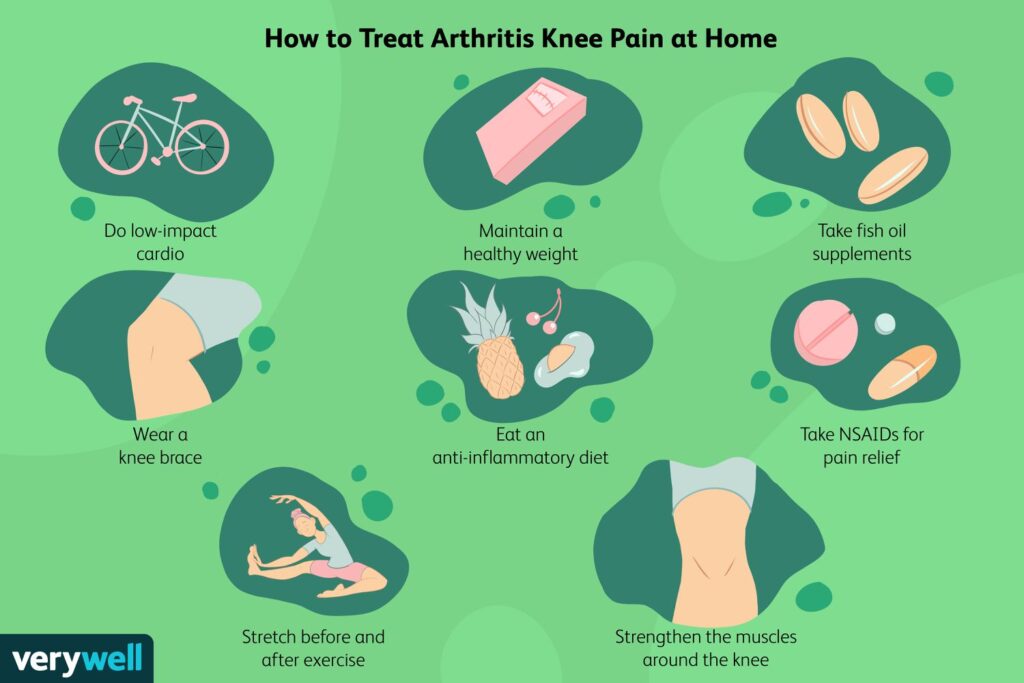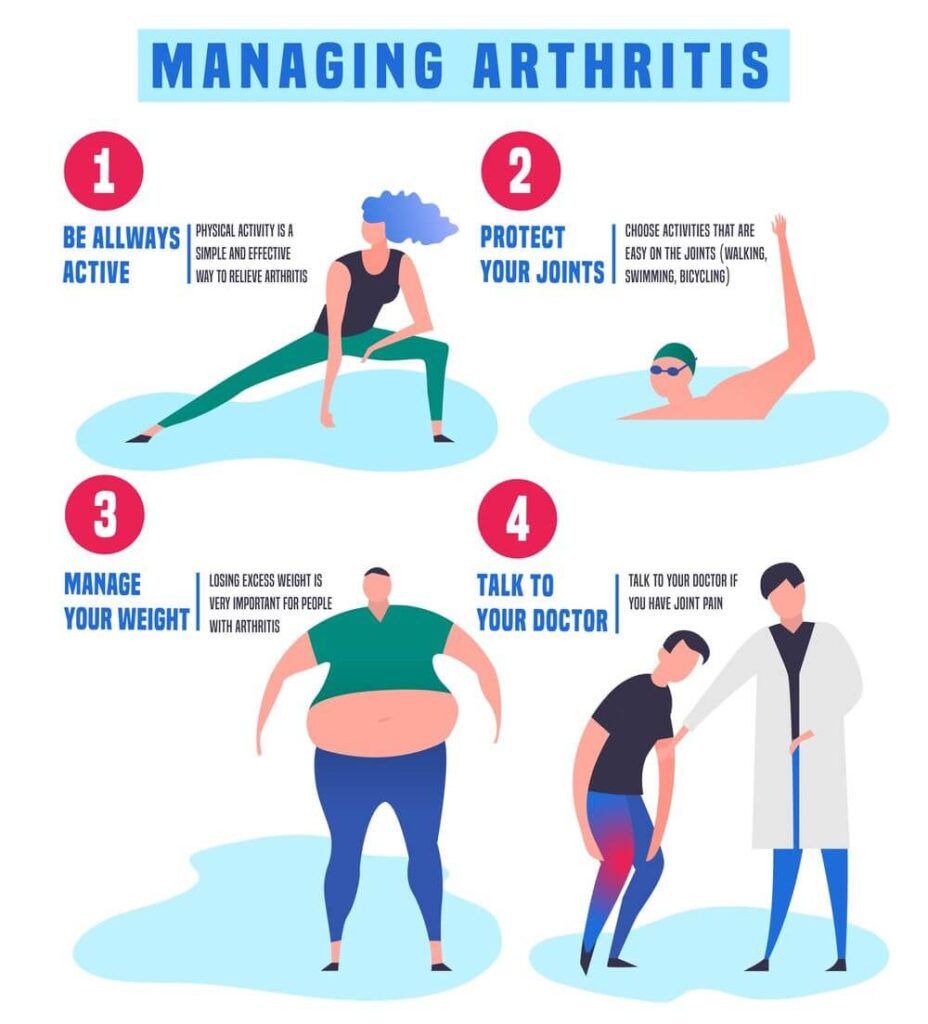Arthritis is a term that encompasses various conditions affecting the joints, causing pain, stiffness, and swelling. Understanding the different types of arthritis and their treatments is essential for managing symptoms and improving quality of life. This article explores various types of arthritis, basic treatments, fastest treatment methods, and self-care strategies.
What Are the Different Types of Arthritis?
Arthritis comprises several distinct types, each with its characteristics and causes. The most common types include:

- Osteoarthritis (OA): OA is the most prevalent form of arthritis. It occurs when the cartilage that cushions the joints wears down over time. It commonly affects weight-bearing joints like the knees, hips, and spine. Symptoms include joint pain, stiffness, and reduced range of motion.
- Rheumatoid Arthritis (RA): RA is an autoimmune disorder where the immune system attacks the synovium, the lining of the joints. This results in inflammation, pain, and swelling in the joints, often affecting both sides of the body. RA can lead to joint deformities and functional disabilities if untreated.
- Psoriatic Arthritis (PsA): PsA is associated with psoriasis, a skin condition. It causes joint inflammation, along with skin lesions. PsA can affect any joint and may lead to joint damage if not managed properly.
- Gout: Gout is a type of inflammatory arthritis caused by the buildup of uric acid crystals in the joints. It typically affects the big toe and can cause sudden, severe pain, redness, and swelling.
- Ankylosing Spondylitis (AS): AS is a form of arthritis that primarily affects the spine, causing inflammation and stiffness. Over time, it can lead to the fusion of spinal bones, reducing flexibility and causing chronic pain.
- Juvenile Idiopathic Arthritis (JIA): JIA is the most common type of arthritis in children. It involves persistent joint inflammation and can impact growth and development. Symptoms include joint pain, swelling, and stiffness.
What Are the Basic Treatments for Arthritis?
Arthritis treatment aims to reduce pain, improve joint function, and enhance the quality of life. Basic treatments include:

- Medications:
- Nonsteroidal Anti-Inflammatory Drugs (NSAIDs): These help reduce inflammation and pain. Common examples include ibuprofen and naproxen.
- Disease-Modifying Antirheumatic Drugs (DMARDs): Used for RA, DMARDs slow disease progression and prevent joint damage.
- Biologics: These are advanced medications used for RA and PsA that target specific immune system components to reduce inflammation.
- Corticosteroids: These help manage inflammation and pain but are usually used for short-term relief.
- Physical Therapy: Physical therapy involves exercises and techniques to improve joint function, strengthen muscles, and enhance mobility.
- Occupational Therapy: Occupational therapists help individuals learn how to perform daily activities with less pain and strain on the joints. They may recommend assistive devices and adaptive techniques.
- Heat and Cold Therapy: Applying heat or cold to affected joints can help alleviate pain and reduce inflammation. Heat can relax muscles, while cold can numb the area and reduce swelling.
- Lifestyle Modifications: Maintaining a healthy weight, engaging in regular exercise, and adopting a balanced diet can help manage arthritis symptoms and improve overall health.
What Is the Fastest Way to Treat Arthritis?

The fastest way to treat arthritis depends on the type and severity of the condition. For acute relief:
- Medications: NSAIDs and corticosteroids can provide quick relief from pain and inflammation. Consult with a healthcare provider for appropriate usage.
- Rest and Ice: Resting the affected joint and applying ice can reduce pain and swelling. This approach is particularly useful during flare-ups.
- Physical Therapy: Starting physical therapy early can help improve joint function and mobility more rapidly.
- Joint Injections: Corticosteroid injections directly into the joint can offer quick and targeted relief from inflammation and pain.
How Can I Treat Arthritis on My Own?

Managing arthritis at home involves several self-care strategies:
- Exercise Regularly: Low-impact exercises like swimming, cycling, and walking can help maintain joint function and reduce stiffness. Aim for at least 30 minutes most days of the week.
- Maintain a Healthy Weight: Excess weight puts additional stress on weight-bearing joints. Adopting a healthy diet and regular exercise can help manage weight and reduce arthritis symptoms.
- Use Assistive Devices: Tools like joint braces, ergonomic kitchen tools, and special shoes can help reduce strain on affected joints and make daily tasks easier.
- Practice Stress Management: Techniques like mindfulness, meditation, and relaxation exercises can help manage pain and improve overall well-being.
- Stay Informed: Educate yourself about your specific type of arthritis and stay updated on new treatments and research. This knowledge can empower you to make informed decisions about your health.
Conclusion
Understanding the different types of arthritis and their treatments is crucial for managing symptoms effectively. From basic treatments and fast relief methods to self-care strategies, various approaches can help improve quality of life. By combining medical treatments with self-care practices, individuals can better manage arthritis and maintain a fulfilling lifestyle.
To Know More – What are the causes and types of arthritis?
